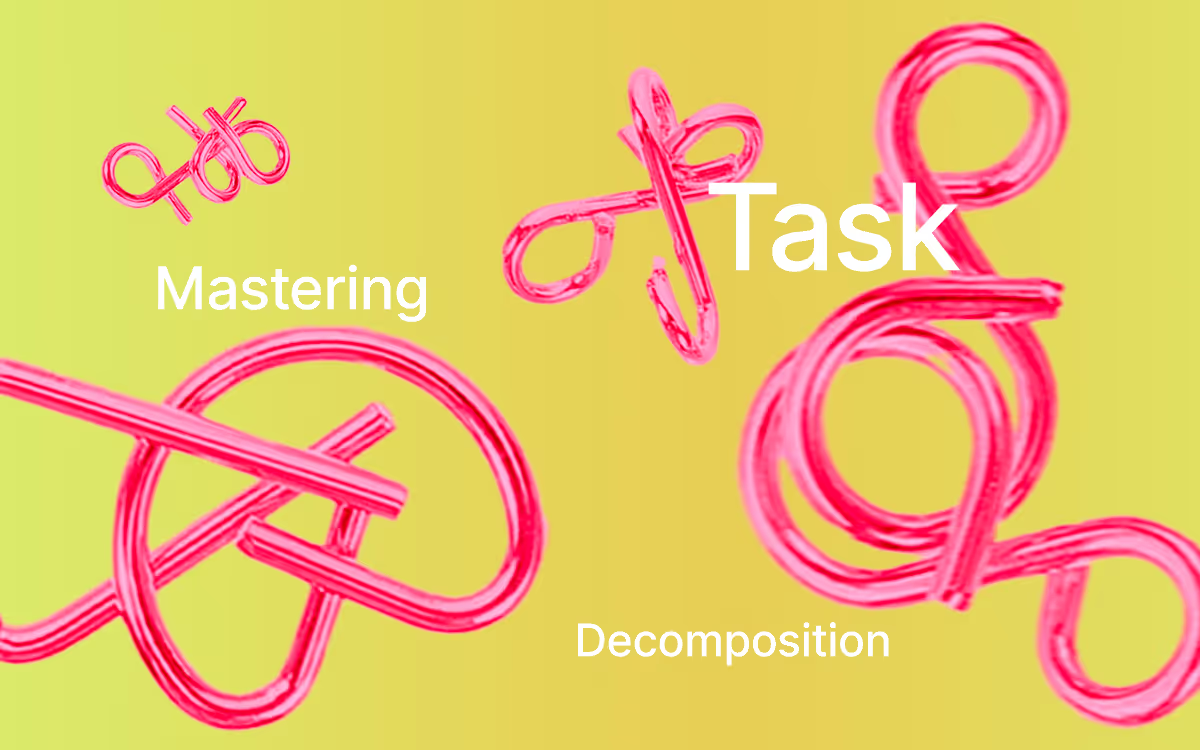Mastering Task Decomposition: Five Questions for Effective Task Breakdown

Embarking on a new project can often feel overwhelming, especially when faced with its complexity and scale. However, by breaking down large projects into manageable tasks you can navigate the path to completion with clarity and confidence.
And yes, we’ve talked about various ways to set tasks before, but this time, we’ve gathered five comprehensive questions that apply to all kinds of projects—from event management to trip planning. Let’s go!
What is the ultimate goal of the project?
Begin by clearly defining the project’s end goal. Understanding the desired outcome provides direction and ensures that all subsequent tasks align with this objective. This clarity serves as a foundation for breaking down the project into actionable steps. As highlighted in the Baldwin Center’s guidelines on managing large projects, starting with a clear goal is crucial for effective task decomposition.
What are the major milestones required to reach this goal?
Identify the significant phases or milestones that mark progress toward the project’s completion. These milestones act as checkpoints, allowing you to monitor progress and maintain motivation. For instance, when writing a research paper, milestones might include completing the literature review, drafting the methodology, and finalizing data analysis. Breaking the project into these phases makes it more manageable and provides a sense of accomplishment as each milestone is achieved.
What specific tasks are necessary to achieve each milestone?
Once milestones are established, delineate the specific tasks required to accomplish each one. This involves detailing every actionable step, no matter how small, to ensure comprehensive coverage of the work needed. Utilizing specific verbs—such as “draft,” “research,” “edit,” or “review"—provides clear guidance on the actions to be taken.
What is the logical sequence of these tasks?
Determine the order in which tasks should be performed by considering dependencies and logical progression. Some tasks may need to be completed before others can commence. Establishing a clear sequence prevents bottlenecks and ensures a smooth workflow. For example, you must gather data before you can analyze it, and analysis should precede the writing of results. Understanding this sequence is essential for efficient project management.
What is the estimated time required for each task, and how will it be scheduled?
Estimate the time needed to complete each task and schedule them accordingly. Be realistic in your estimations, allowing for potential challenges or delays. Allocating specific time blocks for each task and setting deadlines fosters accountability and keeps the project on track.
By systematically addressing these five questions, you transform a daunting project into a series of manageable tasks. This structured approach not only alleviates the feeling of being overwhelmed but also enhances productivity, leading to successful project completion.
And to make sure you don’t postpone your boldest and most important tasks, check out our tutorial How to Set Goals. and get started with Timestripe!
Read next



